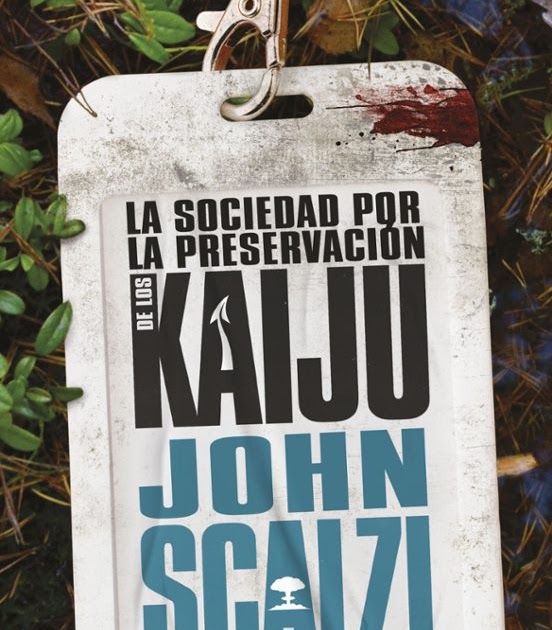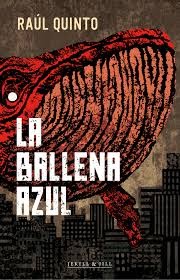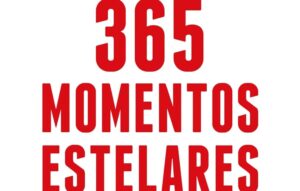
Original language: English
Original title: The Kaiju Preservation Society
Year of publication: 2022
Translation: Gemma Benavent
Valuation: Alright
I’m sure I don’t need to start the review by explaining what kaiju are, but hey, in case someone reads it who has been too busy with them throughout their life for more urgent and prosaic reasons (eating, procreating , find enough resources to eat and procreate…), a quick test: have you ever seen Godzilla movies or Pacific Rim? You at least know who or what Godzilla is, I guess? Okay, so that’s a kaiju: a giant bug capable of destroying a city (preferably, Tokyo). The famous Science Fiction writer John Scalzi proposes in this novel the existence of a world parallel to Earth, in which these kaiju represent not only the top of the food chain, but authentic ecosystems with legs – and wings – that reign over a world in which living beings have evolved in a totally different way from our planet. As nuclear explosions weaken the barrier between these two parallel Earths and, furthermore, kaiju are attracted to atomic explosions, since they themselves use atomic energy to live, the Society for the Preservation of Kaiju was created, which, Working in bases located in your world, investigate these “animals” and ensure that they do not pass to the other side. Into that organization ends up, by chance, since he was working as a food deliveryman in New York during the last pandemic, a young man named Jamie Gray, who will live an adventure on the “kaiju side” like he would never have imagined.
As anyone can imagine, the novel is more of a diversion than anything else; In fact, as simple entertainment it works very well, due to the playful nature of its plot, the humor that most of the dialogues give off and, above all, the speed with which it can be read with short chapters and agile prose, without frills; few or no descriptions, neither of the characters nor of the places where the action takes place. At least the ones that take place on Earth 1, let’s say (of course, there’s not much need to describe New York City, for example), because the alternative kaiju world deserves much more of the author’s attention, who also goes into great detail. taste about kaiju biology, how the SPK base works, etc. This geek enthusiasm, so to speak, together with, as I said, the ease of reading and good-naturedness millennial (o centennial, I don’t know anymore) what its protagonists give off. Although, of course, there are also some very bad bad guys, don’t believe it – they make it a novel of an eminently fun nature and that does not pose any conflict.
There is only one objection that I have to a book that, since it does not have too many pretensions, cannot be disappointing in any way… And you will forgive me for having it, since I am aware that I am going to sound very “old-fashioned” “(although wait to read my reflection until the end before deciding): gay, non-binary, racialized characters appear in the novel – it is assumed, because of their names, because I already said that the author does not dedicate a single line to the description of no one, I don’t know if intentionally or not, from different countries and cultures and, of course, the majority of women occupying positions of management and authority. Quite an ode to diversity, wow. Be careful, I have nothing against the inclusion of this diversity in literature, but I would like that if a gay or non-binary character appears and that circumstance is mentioned, it would also have some importance, not just in the plot, but simply in the development of the character, because if not, call me crazy, but it sounds more like glue to cover the file. Even more so when we can assume that the protagonist, Jamie, or his boss and friend Tom are white (I suppose that if they were of a different race, the author would have mentioned it), cisheterosexual – it is also true that in this book the only ones who seem to have an interest in amatory activities are the kaiju- and, above all, Americans.
Something similar happens with the internationalism of the SPK personnel. What is the point of giving Inuit, Indian or Maori names to the characters, if then it seems that they all grew up in some residential suburb in the USA and completed their doctorates at some Ivy university? League? Neither a reference to other cultures, nor a way of thinking and acting different from that of the most hackneyed Hollywood films. Everything, yes, with great concern to demonstrate that they are good people – well, there are a couple of characters who behave in a slightly more specific way, but they are on the side of the good -, so that potential readers do not become alarmed. millennials, centennials or whoever reads these types of books, nowadays…
Okay, well, having already vomited my bile as an older gentleman outraged by the decadence of the West (I thank you), I abandon the Perreteverte mode to conclude with the fact that, in any case, the good-natured and pop wokism that permeates the novel has an explanation: apparently According to what he himself says in a postface, Scalzi wrote it in 2021, after having gone through a difficult 2020… you know why, in which, in addition, he had to abandon the book on which he was working and for which I already had a delivery date. Write The Kaiju Preservation Society, without further complications or ambitious expectations, helped him overcome that bad time with this rather playful “therapy” that, in the process, gave us readers a great time. As long as we don’t take the novel too seriously, that goes without saying…
Source: https://unlibroaldia.blogspot.com/2023/11/john-scalzi-la-sociedad-por-la.html


